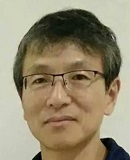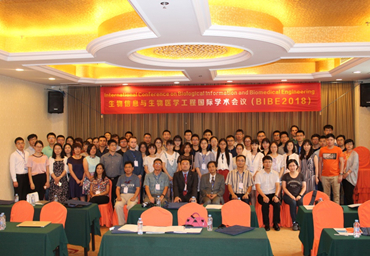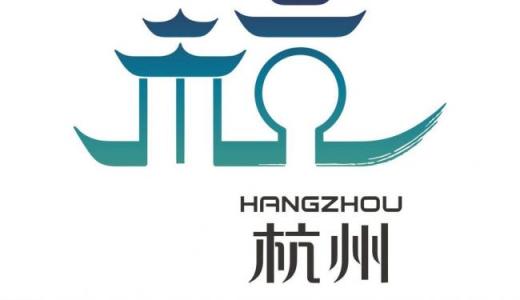Keynote Speaker
 |
Prof. Chengyu Liu |
| Southeast University, Nanjing, China | |
| http://ins.seu.edu.cn/2017/0930/c2346a199962/page.htm | |
|
Title: Wearable ECG Monitoring Abstract: Real-time, long-term wearable ECG monitoring is essential for early detecting the cardiovascular diseases and other health risks. This talk presents four important aspects about wearable ECG study, and summarizes the technology challenges exist in each aspect. For hardware, the challenge mainly comes from the textile sensor design and ergonomic design for comfort measurement. Challenges from algorithm aspect include: real-time signal quality assessment, robust&accurate feature detection and big-data&AI-based disease detection model development. High-quality clinical data are also needed, which plays an essential role in training reliable and generalizable models. Herein, the open-access and carefully labeled databases will be starved. Finally, the efficient clinical application is also important, which refers to the specially designed clinical study with the close cooperation with doctors. |
 |
Prof. Weimin Huang |
| School of Mechanical and Aerospace Engineering, Nanyang Technological University, Singapore | |
| http://www.ntu.edu.sg/home/mwmhuang/ | |
|
Title: Novel shape memory hydrogels for novel biomedical devices Abstract: The shape memory effect (SME) enables a nice integration of sensing and actuation together within a piece of material for many novel applications. We have seen a range of biomedical devices utilizing shape memory alloys/polymers. This talk will focus on two new types of shape memory hydrogels, one is water responsive with controlled activation time, and the other is cooling responsive which is ideal for 4D bio-printing. Example biomedical applications of both hydrogels will be demonstrated. |
 |
Prof. Huiru Zheng |
| School of Computing, Ulster University, UK | |
| Fellow of Higher Education Academy Senior Member of IEEE Link: https://www.ulster.ac.uk/staff/h-zheng |
|
|
Title: From telemedicine to mHealth - sensor enabled applications to support connected health and well-being
Abstract: Telemedicine was originally developed to reach and treat people at remote locations. With the rapid advance of telecommunication, sensors and mobile technology, it has been developed to provide care for people in both rural and urban areas. At the meantime, population ageing has become a global phenomenon and countries are facing ongoing challenges in caring for their elderly. Technologies, especially mobile and wearable technologies, are now available to provide an effective solution for better caring of aging populations to lower healthcare cost. In this talk, Prof. Zheng will highlight recent research work in telecare and mHealth. The application to well-being and self-management of chronic conditions will be presented. The presentation will conclude with the discussion of challenges and opportunities in connected health. |
 |
Dr. Nidhi Mishra |
| Assistant Professor | |
| Indian Institute of Information Technology, Allahabad, India | |
|
Title: Advanced Polymeric Biomaterials for Drug Delivery
Abstract: Conventional form of drug delivery is not target specific and the release of drug to the target site is not sustained . Drug delivery via a nanocomposite will give steady and complete drug release. Synthesis and characterization of nanocomposites using polymer matrix of PNIPAM and its use in drug delivery shall be discussed. The synthesis of polymer nanocomposites is an integral aspect of polymer nanotechnology. We have synthesized several nanocomposites using PNIPAM as polymer matrix and other fillers. The synthesized nanocomposites have large surface area per unit volume and interstitial spaces in nanometer range. Thus these are nanocompposites. They have been explored for the application of targeted drug delivery system for anticancer agents. |
 |
Prof. Jyh-Cheng Chen |
| Dept. of Biomedical Imaging & Radiological Sciences National Yang-Ming University | |
|
Title: Limited-angle low-dose CT image denoising using wide residual network Abstract: Dose reduction of the computed tomography (CT) has become a serious issue in the recent radiological studies. In dental digital tomosynthesis (DTS), reconstruction from limited-angle scanning would lead to significant noise and artifacts. In this study, we constructed and validated an image denoising method for limited-angle low-dose CT or DTS images. For the training process, normal-dose DTS (NDDTS) and low-dose DTS (LDDTS) images of human teeth were acquired. We collected the real data with angular coverage of scanning from -60 to 60 degrees, with a sampling interval of one degree as limited-angle data. We also segmented each slice into small patches for training with modified wide residual network (WRN) for image denoising task.s For the streak artifacts reduction, noise reduction, visualization of the tooth structure, our denoising LDDTS images showed significantly better image quality than those of NDDTS images in terms of signal-to-noise ratio (SNR), contrast-to-noise ratio (CNR), and artifact index as quantitative results. In this work, we trained a modified WRN as an image denoising method for limited-angle LDDTS images. The performance evaluation of the results by visual inspection as well as quantitive measurements shows that our proposed method is comparable to other main stream networks on image denoising. |
 |
Prof. Chen Bin |
| full professor and vice director in State Key Laboratory of Multiphase Flow in Power Engineering, Xi’an Jiaotong University | |
|
Title: Intelligent Diagnosis and Personalized Laser Treatment for the Vascular Dermatology Based on the Laser Speckle Imaging. Abstract: As one of the typical congenital vascular dermatoses caused by dermal capillary malformation, port wine stain (PWS) birthmarks occur in 0.3%–0.5% of newborns, which can negatively affect the physical and mental well-being of patients because 90% of these marks appear on the face and neck. PWS has been demonstrated to be curable by laser-mediated therapies based on the selective photothermolysis. However, the total cute rate was still very low. One important reason of the low cute rate is the poor scalability of the malformed micro vessels, leading to the empirical dependent treatment. Aiming to the precise therapy, the morphological features of blood vessels are important for the evaluation and optimization of the laser parameters. Unfortunately, few effective measurement methods are available for thin skin tissue. A theoretical model used for extracting the optical and structural parameters of tissue medium was developed by integrating the spectral measurement and mathematical method for inverse radiation method. This model was experimentally validated by constructing tissue phantoms and conducting spectral measurements, where good agreement can be observed between the measured and calculated spectroscopic data. The vessel depth extraction procedure was demonstrated in the tissue phantom with a single discrete blood vessel, where the average relative error of estimated vessel depth was only about 5%. Together with the vessel diameter by laser speckle imaging, personalized precise treatment can be expected. |
 |
Dr. Min Zhao |
| University of the sunshine coast | |
| http://www.bioinfo-minzhao.org/index.html | |
|
Title: The application of whole exome sequencing to identify the rare variants for clinical practice Abstract: Recently, evolution of powerful genetic techniques, including whole exome sequencing (WES), has enabled important new discoveries in an array of genetic diseases. However, the large-scale genetic data manipulation and analysis has become a challenge to translate genetic data into the clinical practice. We presented our integrative analysis approaches on two lung diseases (pulmonary arterial hypertension and pulmonary fibrosis) with different strategies to explain how genomics data can help clinical diagnosis and drug use recommendations. Using linkage analysis-based strategy, we employed WES in 190 pulmonary fibrosis families and to date have identified functional rare variants (RVs) associated with telomere function, centrosome function, and various stress-related pathways. In the arterial hypertension study, we performed whole-exome sequencing (WES) on 36 patients and sought to identify RVs underlying IPAH and determine whether RVs differ in vasodilator-responsive patients versus vasodilator-nonresponsive patients. The output from these two studies help us to carry out deep genetic mutation screening and to explore the biological mechanism behind it. The talk will mainly involve the analysis and integration of multi-family genetic disease analysis, the construction and analysis of drug-related genetic networks to accelerate the drug development process. Identifying those disease-causing RVs will clarify critical mechanisms in the pathogenesis of familial disease and sporadic rare diseases. |
 |
Prof. FangXiang Wu |
| professor of College of Engineering, and of Department of Computer Science at the University of Saskatchewan, Canada | |
|
Title: Machine Learning and Deep Learning Models for Brain Image Analysis Abstract: Magnetic Resonance Imaging (MRI) is a non-invasive and good soft tissue contrast imaging modality, which provides invaluable information about the brain without exposing objects to a high ionization radiation. However, it is challenging to discover new knowledge such as lesion segmentation and diagnosis of diseases from brain MRI images. In this presentation, I will talk about some of our recent results for analyzing brain MRI images based on machine learning and deep learning models. First, I will present several machine learning models that we developed for diagnosing brain diseases by transferring brain MRI images into brain networks. I will then introduce one deep learning model we developed for segmenting brain disease lesions in brain images. |
Important Dates
- Submission Deadline:
July 10, 2019 - Conference Date:
July 20-22,2019
Contact Us
- Email:secretary_wang@icbibe.org
- Tel:18771047473
- QQ:1960740002
(9:00-18:00,Monday to Friday)












